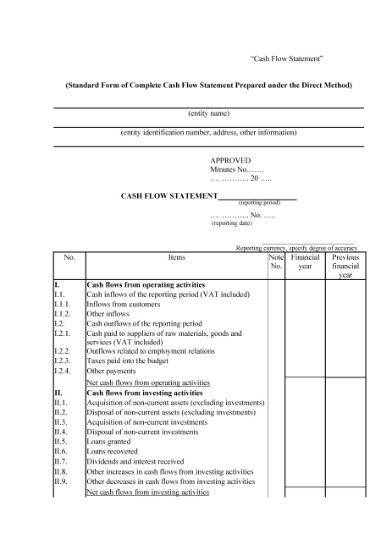
Professional advice on specific issues should be sought from a lawyer, HR consultant or other professional. Overtime is calculated differently for hourly and salaried employees. Most salaried employees are exempt from overtime, but your business may be required to pay overtime to some lower-paid exempt employees. An employee’s federal income tax withholding is determined by using the information on a Form W-4 completed by the employee at hire and for state income tax by a state W-4 or another tax form.
A worker is considered non-exempt and eligible for overtime unless an exemption can be proved by the employer. Small business owners benefit from accounting software because it helps them track accounts receivable and accounts payable, gauge their profitability, and prepare for tax season. A small business is one that can use out-of-the-box software without requiring extensive customizations.

Tax withholding is the process of deducting applicable federal, state and local employment taxes from employees’ wages. Supplemental wages are payments made to an employee in addition to his or her regular wages — such as bonuses, commissions, severance pay, overtime pay, back pay and retroactive wage increases. Supplemental wages may be subject to different tax rules than regular wages are. The U.S. Department of Labor requires employers to keep all payroll records for three years. The IRS requires that all tax records, including those for payroll taxes, be kept for at least three years, and longer in some cases.
Employee self-service (ESS)
With this retirement plan, employees can deposit funds and enjoy access to tax advantages. First passed in 1993, the Family Medical Leave Act (FMLA) allows employees to take leave from work in order to care for themselves or family members. When these employees return to work, their prior salary and health benefits must be fully restored. SRCOP (Standard Rate Cut-Off Point) – the amount of income that is liable to tax at the standard rate of 20%. Any income more than the SRCOP will be liable to tax at the higher rate, currently 40%.
- Federal law doesn’t have strict guidelines or requirements regarding PTO; you choose whether you want to offer paid vacation time or not.
- Also called a cafeteria plan, a Section 125 plan lets employees pay for their benefits — such as health insurance, flexible spending accounts and traditional 401(k) plans — with pretax money.
- Exempt employees are excluded from the Fair Labor Standards Act’s overtime provisions, meaning these employees do not receive overtime pay when they work more than 40 hours per week.
State Unemployment Tax Act (SUTA) taxes fund state-administered unemployment programs. SUTA is an employer-paid tax, except in Alaska, New Jersey, and Pennsylvania, where both employers and employees chip in. The Electronic Federal Tax Payment System (EFTPS) was created in hopes of automating the otherwise clumsy process of handling physically mailed tax payments.
The A to Z of payroll: A guide on terms and concepts to manage payroll
The individual regulations in FLSA may, under certain circumstances, be superseded by state and local laws. Tax Credit – Each employee is entitled to tax credits depending on their personal circumstances, e.g. married person’s or civil partner’s tax credit, employee (PAYE) tax credit, etc. These tax credits are used to reduce the tax calculated on an employee’s gross pay. However, any unused tax credits in a pay week or month are carried forward to subsequent pay period(s) within the tax year. After your tax is calculated, as a percentage of your income, the tax credit is deducted from this to reduce the amount of tax that you have to pay. Exempt vs. Non-Exempt – Employers pay exempt employees a salary and they are not eligible for overtime pay.
Salaried employees are paid an annual salary, while hourly employees are paid an hourly rate times the hours they’ve worked. Gross pay is stated as an annual amount for salaried employees. The annual salary is divided by the number of pay periods in the year to determine gross pay for a pay period. Gross pay is the total paid to an employee each pay period before any deductions for taxes or other purposes are made. It’s determined in different ways for salaried and hourly employees. It includes distributing money in the form of checks and direct deposits.
- Businesses can run payroll manually or outsource the task to payroll software or an accounting firm.
- Net Pay – the amount of pay an employee receives after deducting all taxes and other contributions.
- Our expert payroll team is here to assist you in your payroll journey and provide you with the support you need.
- Their company pays employees every two weeks for a total of 26 pay periods.
- Courts sometimes issue garnishment orders for debts like student loans, small claims judgments, child support, or other amounts the employee owes.
The overtime payment is more than the average salary or gross pay of the employee. Gross Wages – this is the total amount of compensation for the pay period. This amount is before any tax withholdings or other deductions. Gross pay may include bonus, overtime, commissions or other pay besides to basic wages. Payroll is the process of paying the company’s employees after calculating their due amount. Processing payroll involves the employees’ names, wages, hours worked, deductions, benefits, and taxes.
FICA
It does not include any extra payments an employee may receive, such as overtime pay, commission, bonuses or benefits. PAYE Cumulative basis – Year to date calculation of tax which ensures that an employee’s tax liability is spread evenly over the year. Each pay period tax deduction is calculated as the total tax due from 01st January to the date of payment and reduced by the amount of year-to-date tax previously deducted.
This record shows all amounts of salary and wages for each pay period and totals for the year. If you have a payroll program as part of your business 11 best excel tips for beginners accounting system, the payroll register is part of that system. The totals are fed into the overall financial statements for your business.
Payroll Dictionary
The tax is 6% of the first $7,000 that an employee earns; however, most businesses do not pay the full 6%. Nonexempt employees are not excluded from FLSA minimum wage or overtime provisions. These employees must be paid no less than the federal minimum wage, along with overtime if they work more than 40 hours in a workweek. Exempt employees are excluded from the Fair Labor Standards Act’s overtime provisions, meaning these employees do not receive overtime pay when they work more than 40 hours per week. Salaried exempt employees are also excluded from the FLSA’s minimum wage provisions. These types of payments are taxable, so you must separate them out when you’re doing payroll accounting and include them in the employee’s taxable wages for the year.
Full-time and Part time employees can only be paid unpaid Personal/Carer’s leave if they don’t have any paid entitlements of the same available. This means that you may have to keep changing your methods, policies, structure, etc. to match the requirements of the new payroll terms. To reduce the hassle incurred due to payroll processing and payroll terms, you can outsource payroll tasks to a relevant provider.
Non-exempt employee
This is because, based on the gross pay, the salary deductions and statutory compliance are decided. Payroll is the list of employees and workers a company must pay and the amount they will receive. It’s also the total amount of salaries and wages a company pays to its employees.

